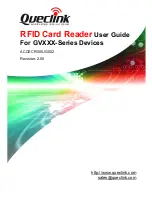
1.8
the vehicle. During reloading work, particular care should be taken not to damage parts of the
sand spreader's fittings or the lacquer coating.
1.6
ENVIRONMENTAL HAZARDS
A hydraulic oil leak constitutes a direct threat to the natural environment owing to its limited
biodegradability. While carrying out maintenance and repair work, which involves the risk of
an oil leak, this work should take place on an oil resistant floor or surface. In the event of oil
leaking into the environment, first of all contain the source of the leak, and then collect the
leaked oil using available means. Remaining oil should be collected using sorbents, or by
mixing the oil with sand, sawdust or other absorbent materials. The oil pollution, once
gathered up, should be kept in a sealed, marked, hydrocarbon resistant container, and then
passed on to the appropriate oil waste recycling centre. The container should be kept away
from heat sources, flammable materials and food.
Oil, which has been used up or is unsuitable for further use owing to a loss of its properties
should be stored in its original packaging in the conditions described above.
1.7
WITHDRAWAL FROM USE
Should the user decide to withdraw the machine from use, the entire sand spreader should
be taken to a scrap yard. When spare parts are changed, worn out or damaged parts should
be taken to a collection point for recyclable raw materials. Hydraulic oil should be taken to the
appropriate facility dealing with the re-use of this type of waste.
Summary of Contents for T130
Page 3: ......
Page 6: ......
Page 26: ...2 12 FIG 2 2A Decal locations Labelling according to table 2 1 Information and warning decals ...
Page 83: ...5 19 FIG 5 10A Lubrication points on the sand spreader ...
Page 88: ...5 24 ...
Page 89: ...NOTES ...
Page 90: ... ...















































